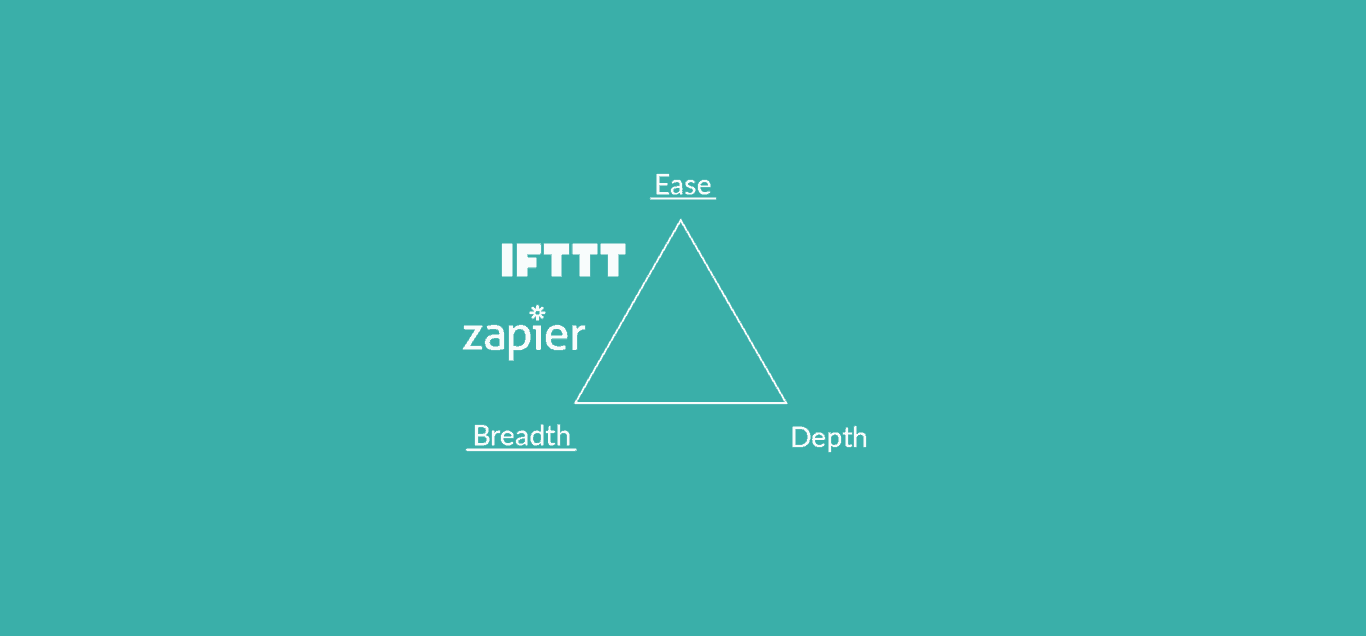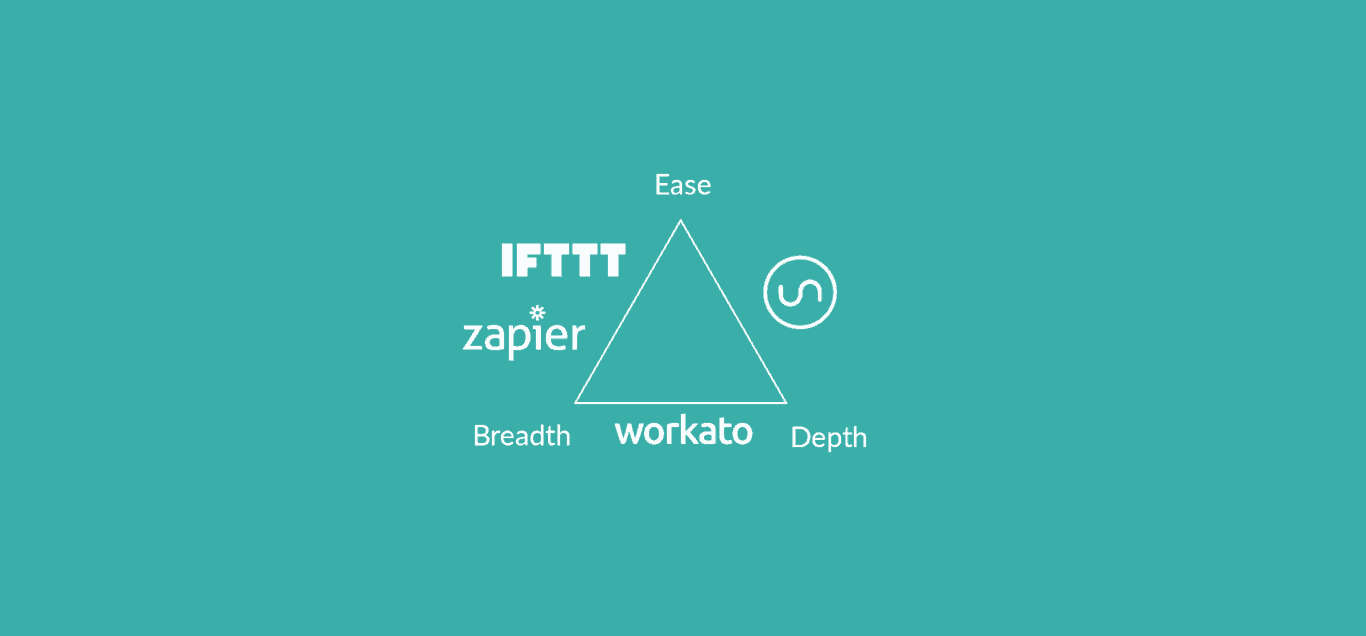How to Pick the Right Integration With the Integration Triangle
We would all love to get our work done in a single tool. Collaboration between teams would be a breeze. Communication would be focused and straightforward. We’d never lose a message or a task again.
But there’s no work management platform that can do everything we need. Everyone’s got their preferences and their own needs. That’s why the market for integrations is growing; the integration is here to stay.
When evaluating what integration is right for your business, consider using the Integration Landscape Triangle.

Let’s go over the three points of the triangle.
- Ease: How simple is the platform? Do you need to be a technical person to use this product? Does it require coding? Will it involve significant onboarding?
- Breadth: How many integrations does the platform have?
- Depth: How much can each integration do? Does it cover just a few fields? Does it create one-way or two-way relationships between tools?
In using the triangle, you can see which tools align with your company’s needs and priorities. And if you’re unsure of what qualities to prioritize? Continue reading for a walkthrough of each axis and what they can do for your workflow.
Ease and breadth

If you have several tools and platforms to integrate — and you need to keep things simple — you’ll want to use an integration platform on this axis. Think of them like a Swiss army knife. It has multiple blades, a corkscrew, a ruler, a magnifying glass, a tiny pen, and so on. There’s a lot you can do with a Swiss army knife, and using it is as simple as flipping open the right tool.
Integration players that focus on the ease/breadth axis have two main things going for them. One, they’re easy to use for just about anyone. No need to know how to code or be particularly tech-inclined in order to use their platform. Two, they can cover just about any technology you can think of. These integration tools are dead simple to use and integrate everything from Jira to smart trash cans. So no matter what you need to integrate, you’ll probably find some way to do it with players on this axis.
That said, these tools just scratch the surface. After all, would you use the miniature saw on a swiss army knife to cut a tree down? Keeping things simple and broadly applicable means it’s difficult to also give enough in the way of customization. Part of the reason for this is that many of these integrations have simple, one-way automations.
Well-known players on this axis include Zapier and IFTTT. Both of these platforms have one-way integrations that can cover thousands of apps and tools. But if you want to build a two-way relationship between work management tools, you’ll need to create many different connections to connect any two fields — and then hope none of the connections are faulty and that you haven’t created any circular dependencies. If you’re looking to fully sync a Jira and Asana project, for example, you can do so through our integration.
Breadth and depth

Players on this axis cover a wide range of platforms and give you the ability to really customize an integration to your specific use case. Imagine a programmable calculator. Because it’s essentially a miniature computer, you can load a number of custom programs on it, from programs that’ll help you pass a math test to complete video games. While everyone can use the calculator’s basic functions, you need a certain level of expertise to install these programs and get the most out of them. In the hands of an expert, the programmable calculator really comes into its own.
Platforms on this axis usually feature robust features that can be applied to multiple integrations. Workato, for instance, uses recipes. By choosing the apps you use, your triggers, and your actions, you can create an intricate process to automate your workflow across tools. Want to automate employee onboarding? Link up your disparate HR applications with a recipe, and you can make the process that much smoother. That’s the power of depth and breadth; you can take an entire workflow, distill it down to a few applications and automate the links between them.
But setting this up app by app and link by link can be a hassle. If you’re not the most technical person in the office, setting up such an automation can be frustrating. And if you don’t have a dedicated IT department who can set it up for you, this can be a game-breaker.
Depth and ease

This axis is about choosing to specialize on specific integrations and making those integrations as deep as possible while keeping them easy to use. The best example of this axis is a powerful video game console. It’s got the best technology on the market and anyone can use it. You just won’t be able to play every single game on your console.
That’s where Unito is focused. We may not have the same breadth as other players in the integration landscape, but our integrations are the deepest in the industry. The two-way relationships you can build between tools allow you to sync most fields — or, in the case of Trello, all of them.
Ease of use is a priority for us as well. There’s no point in designing a collaborative powerhouse if it takes an engineer to set it up properly. That’s why our solution is no code and has an intuitive interface. We want our tool to be as simple as possible without sacrificing the strength of our integrations.
Our place on the triangle

The best integration is the one that does exactly what you need. No integration can be easy-to-use, deep, and broadly applicable to a wide number of platforms. Instead of trying to find an integration that does it all, use the integration triangle to set your priorities and find the perfect tool for you.
So which one’s right?
Need to know which one’s right for you? Here’s the breakdown of how Unito compares to some of the most popular integration solutions on the market:


